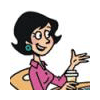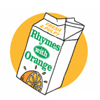The Thrill of Web Design: Creativity and Problem-Solving Combined
Published in Workplace 101
Web design is a dynamic and thrilling field that offers a unique blend of creativity and problem-solving. It is a discipline where artistry meets technology, allowing designers to create visually appealing and functional websites. Here's why web design brings the thrill of creativity and problem-solving together:Creativity Unleashed:Web design provides an outlet for creative expression. Designers have the freedom to conceptualize and bring their imaginative ideas to life. They can explore different color palettes, typography, layouts, and visuals to create unique and captivating digital experiences. Whether it's crafting stunning visuals, designing intuitive user interfaces, or implementing innovative interactions, web design allows designers to showcase their artistic flair.
Solving User Experience Challenges:Effective web design goes beyond aesthetics. It focuses on creating seamless and engaging user experiences. Designers analyze user behavior, anticipate their needs, and develop intuitive navigation structures. They strive to optimize website usability, accessibility, and performance to ensure visitors have a positive and enjoyable experience. Problem-solving skills come into play as designers tackle challenges like information architecture, responsive design, and cross-browser compatibility to create user-friendly websites.
Adapting to Technological Advancements:Web design constantly evolves alongside technological advancements. Designers must stay abreast of emerging trends, new design techniques, and evolving user expectations. They embrace the challenge of learning and mastering new tools, frameworks, and coding languages. From responsive design to interactive animations, designers harness the power of technology to create cutting-edge websites that push the boundaries of what is possible.
Collaboration and Client Interaction:Web designers often collaborate closely with clients, stakeholders, and other professionals, such as developers and marketers. They must effectively communicate their design concepts, listen to client requirements, and translate them into visually compelling solutions. The collaborative nature of web design allows designers to understand diverse perspectives, incorporate feedback, and iteratively refine their designs. This collaborative process enhances problem-solving skills and leads to the creation of websites that align with clients' goals and user expectations.
Continual Learning and Growth:Web design is a field that is continuously evolving, presenting endless opportunities for learning and growth. Designers can expand their skill set by exploring new design trends, acquiring knowledge in areas like user experience (UX) and user interface (UI) design, or mastering emerging technologies like voice interfaces or virtual reality. This constant evolution keeps designers engaged, motivated, and always pushing the boundaries of their craft.
In conclusion, web design offers the perfect blend of creativity and problem-solving. Designers can unleash their creativity while solving user experience challenges, adapting to technological advancements, collaborating with clients and professionals, and embracing continuous learning. The thrill of web design lies in the ability to create visually stunning and functional websites that captivate audiences and make a lasting impact in the digital realm.
This article was generated by Open AI with human guidance and editing along the way.











Comments